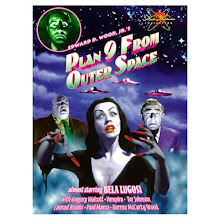by Jason Pyles / January 25, 2009
“Dogville” cannot be accurately conveyed through mere description. The only way to know “Dogville” is to endure it.
I say endure not because the film is three hours long and set like a sparse stage play, rather, I say endure because of the way it drags us through twisted bouts with morality. Somehow, amid its minimalistic design, “Dogville” manages to expose the heinous depths to which human nature is capable of plummeting.
And what’s more, the film’s concluding scenes make us root for deplorable (albeit retributive) behavior. The former victim makes victims of her abusers, sinking to their inhumanity, and our spectator’s gladness thereby incriminates us vicariously. Thus we realize that writer and director, Lars von Tier, has lured us into validating his film’s apparent assertion that bubbling beneath the exterior of us all are evil acts waiting to spring forth. After all, Grace hoped for a different lifestyle, but small-town Dogville squelches her hope; goodness is mythical, she seems to decide.
Though “Dogville” is a magnificent film, it’s not profound. Many other films have reached similarly sad conclusions. Aside from the emotional responses it provokes, “Dogville’s” meanness is only matched by its unusualness. I cannot think of another motion picture quite like this one.
Though the film is set in the late 1930s, early ’40s, “Dogville” reminds me of something Nathaniel Hawthorne might have written to comment on the sociology of Puritanism, particularly with regard to issues of morality.
The film’s shabby stage is adorned, here and there, with occasional physical objects of set design, but the bleak stage is nonetheless prominent. Similarly, the residents of the township of Dogville dress up their viciousness with the illusion of simple values and piety, but their monstrous natures are ever visible through their invisible homes. We witness the first rape in a long shot from across the town. One can’t help but wonder, through the film’s “illustrations,” how differently we might behave if our walls were also transparent.
Setting aside the multiple rapes, the human dog chain (a masterstroke), the heartless breaking of figurines and parallel ruthless execution of children, “Dogville” offers other stimulating considerations for lovers of the filmic medium: We’ve seen plays and we’ve seen films; we’ve also seen filmed plays. But to me “Dogville” is something more, because it overlaps the two and reveals the fine line between them.
I suppose nearly all actors in films and plays emit the illusion of total acceptance of their surroundings; seemingly convinced themselves that their props are real, we also agree to believe. But in “Dogville” the vehicles that drive in and out of “the town” are just as tangible to the cast as the doors that we cannot perceive, yet the actors still knock, open and close those doors and we still hear each action.
We also hear other things that we know aren’t there: crickets, rain, thunder. And the set is given visual additions, such as the fog and snow. All of these could also be presented in a play. Even the condensing of time is characteristic of both plays and movies.
Yet “Dogville” strikes me as more than just a filmed play: I was astounded at my willingness to be deluded into overlooking blatant artificiality and perceiving this odd town and its appalling goings-on as reality.
The very last shot shows us “Moses,” the dog, in actuality — the same dog that before we could only hear or see a chalk drawing of. This final moment reinforced my illusion, and for an instant, made me think to myself, ‘See? This is really happening! Even the invisible objects were truly there all along.’
Sunday, January 25, 2009
Subscribe to:
Post Comments (Atom)






























































1 comment:
I love morality plays, and Dogville is one of the best I've seen. I'll have to agree with you that the movie moved slowly, but I think that's part of the point. It must have seemed like a terribly long time to Nicole Kidman's character (I forget her name, I haven't seen the movie for about 3 years.) to have to endure the treatment that she was getting. I live in a very small town -- 600 people -- and I can imagine something like that happening here.
Also, I think doing the film on a sound stage with the houses having imaginary walls and doors was a bit of genius. We all think we're protected by our walls, but that movie put us in the position of God, being able to see through it all.
Just a few thoughts.
Butch
Post a Comment